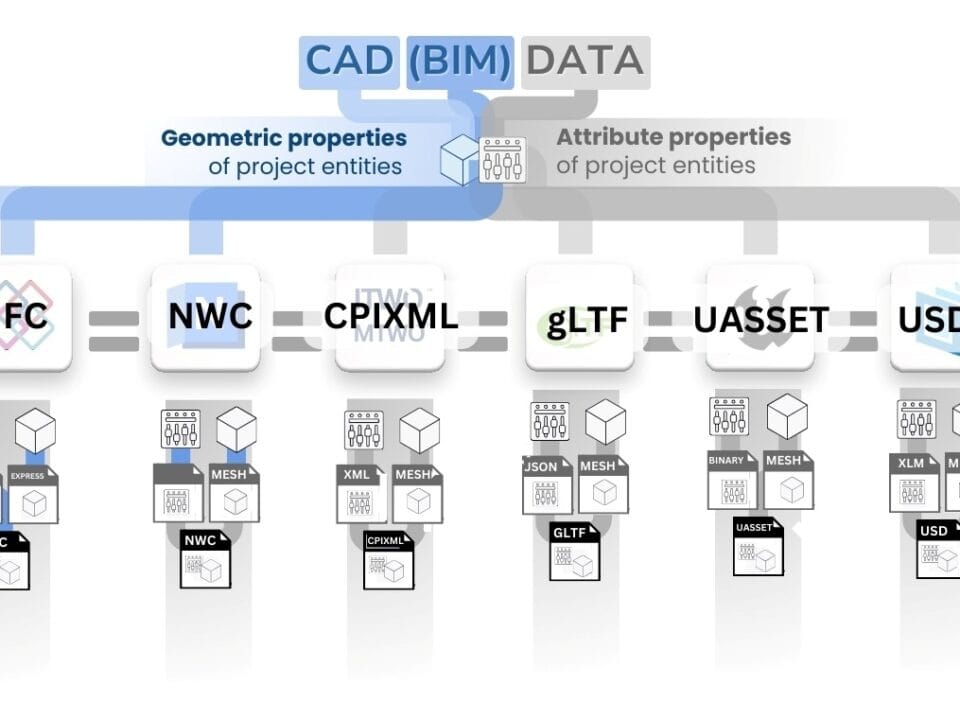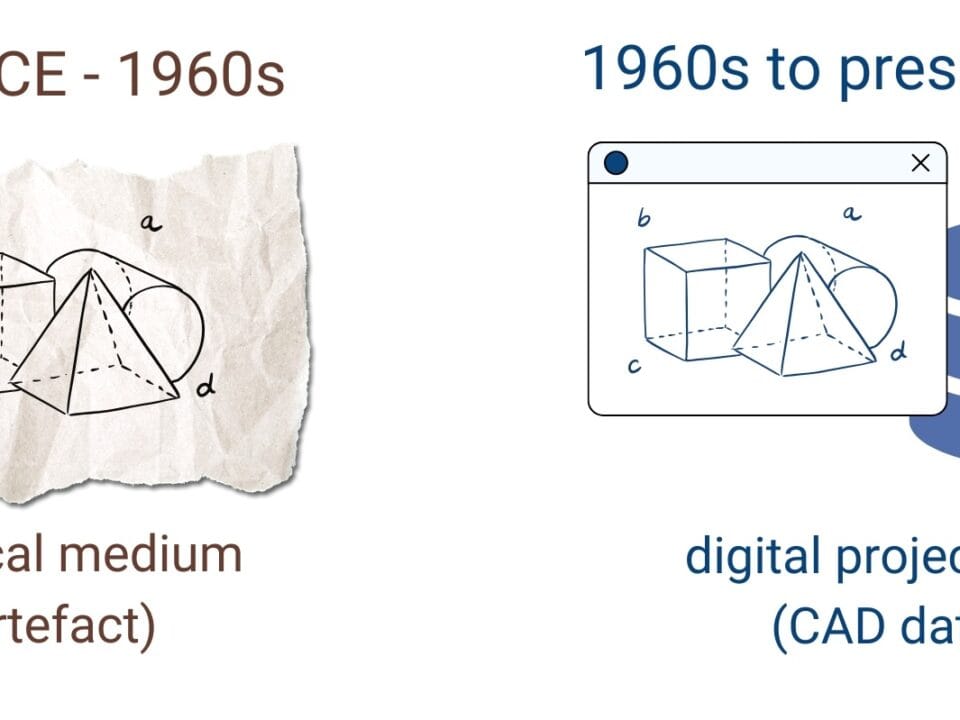In the modern construction industry, the systems, applications and data warehouses of companies are actively filled with information and data of various types and formats (Fig. 3.1-1). Let’s take a closer look at the main types of data that form the information landscape of a modern company operating in the construction industry:
- Structured data: this data has a clear organizational structure, e.g. Excel Spreadsheets and Relational Databases.
- Unstructured data: this is information that is not organized according to strict rules. Examples of such data are text, video, photos, and audio recordings.
- Loosely structured data: these data occupy an intermediate position between structured and unstructured data. They contain elements of structure, but this structure is not always clear or often described through different schemas. Examples of semi-structured data in construction are: technical specifications, project documentation or progress reports.
- Textual data: includes anything derived from oral and written communications, such as emails, transcripts of meetings and appointments.
- Geometric data: this data comes from CAD programs in which experts create geometric data of project elements for visualization, confirmation of volume values or collision checking.
It is important to note that geometric and text (alphanumeric) data are not a separate category, but can be present in all three types of data. Geometric data, for example, can be part of both structured data (parametric CAD formats) and unstructured data (scanned drawings). Text data can similarly be both organized in databases (structured data) and exist as documents without a clear structure.
Each type of data in a construction company is a unique element in the mosaic of the company’s information assets. From unstructured data, such as images from construction sites and audio recordings of meetings, to structured records, including tables and databases, each element plays an important role in shaping the company’s information landscape.
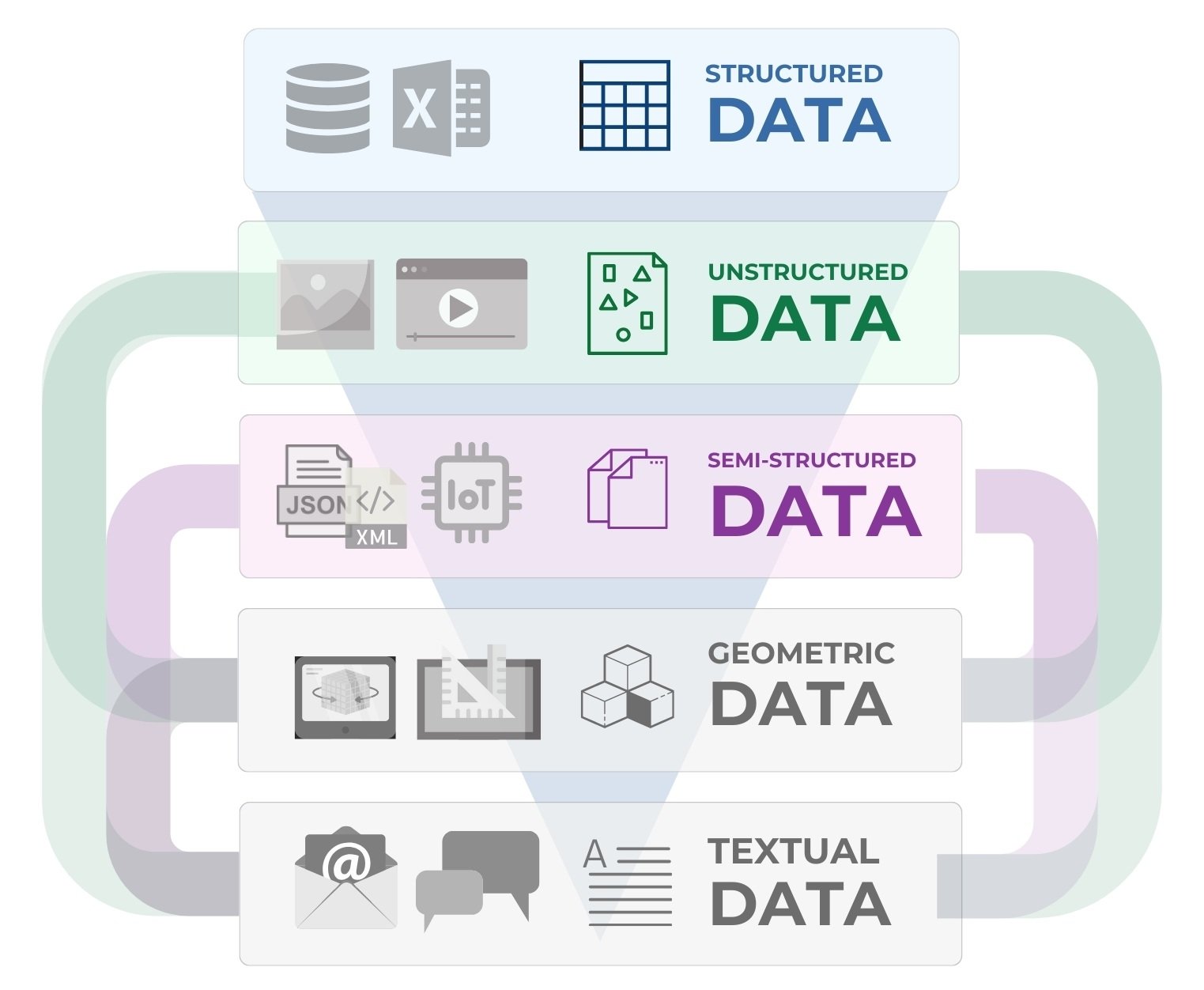
Here is a sample list of just some of the systems and associated data types (Fig. 3.1-2) used in construction:
- ERP (Enterprise Resource Planning) – handles generally structured data to help manage enterprise resources and integrate various business processes.
- CAD (Computer-Aided Design) combined with BIM (Building Information Modeling) – uses geometric and semi-structured data to design and model construction projects, ensuring accuracy and consistency of information during the design phase.
- GIS (Geographic Information Systems) – works with geometric and structured data to create and analyze map data and spatial relationships.
- RFID (Radio-Frequency Identification) – uses semi-structured data to efficiently track materials and equipment on a construction site using radio frequency identification.
- ECM (Engineering Content Management) is a system for managing engineering data and documentation, including semi-structured and unstructured data such as technical drawings and design documents.
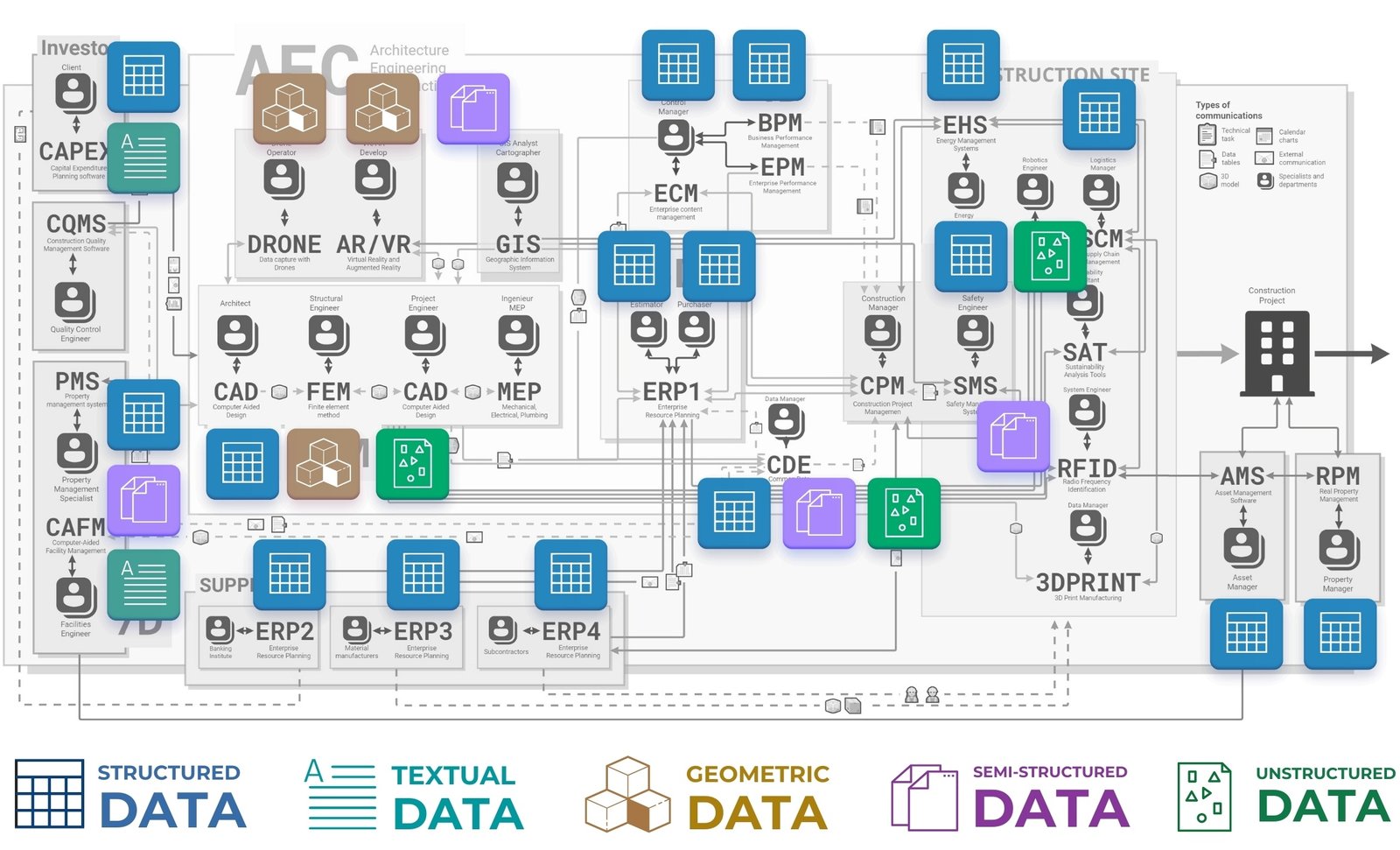
These and many of the company’s other systems manage a wide range of data, from structured tabular data to complex geometric models, providing integrated collaboration in the design, planning and construction management processes.
In the example of a simplified dialog (Fig. 3.1-3), different types of data are exchanged between construction project specialists:
Architect: “Taking into account the client’s wishes, I have added a rooftop seating area. Please take a look at the new design” (geometric data – model).
Structural engineer: “The project has been received. I am calculating the load-bearing capacity of the roof for the new recreation area” (structured and semi-structured data – calculation tables).
Purchasing manager: “Need specifications and quantities of materials for the recreation area to organize the purchase” (textual and semi-structured data – lists and specifications).
Health and Safety Engineer: “Received data on new area. I am assessing the risks and updating the safety plan” (semi-structured data – documents and plans).
Specialist in BIM -modeling: “Making changes to the overall project model to adjust the working documentation” (geometric data and semi-structured data).
Project Manager: “I am incorporating the new rest area into the work schedule. I am updating schedules and resources in the project management system” (structured and semi-structured data – schedules and plans).
Facility Maintenance Specialist (FM): “I prepare data for future maintenance of the recreation area and input it into the property management system” (structured and semi-structured data – instructions and maintenance plans).
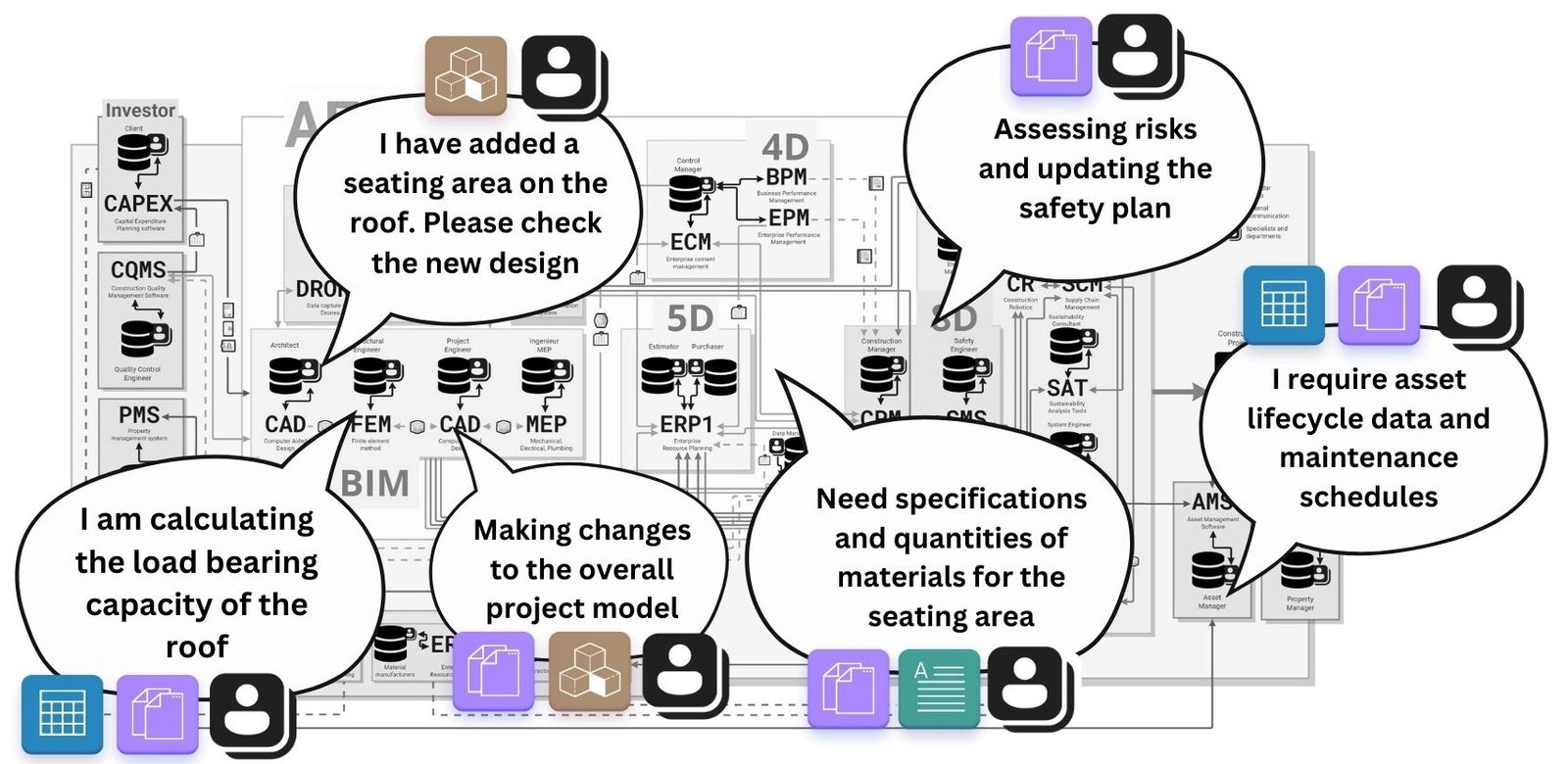
Each professional works with different types of data to ensure effective team collaboration and project success. Understanding the differences between structured, semi-structured and unstructured data allows you to recognize the unique role each type plays in digital business processes. It is important to not only know that there are different forms of data, but also to understand how, where and why they are used.
Not so long ago, the idea of combining such diverse data seemed ambitious but difficult to realize. Today, it is already part of everyday practice. Integration of data of different schemas and structures has become an integral part of modern information systems architecture.
In the following chapters we will look in detail at the key standards and approaches that enable structured, semi-structured and unstructured data to be combined into a single coherent view. Special attention will be paid to structured data and relational databases – as the main mechanisms for storing, processing and analyzing information in the construction industry.








